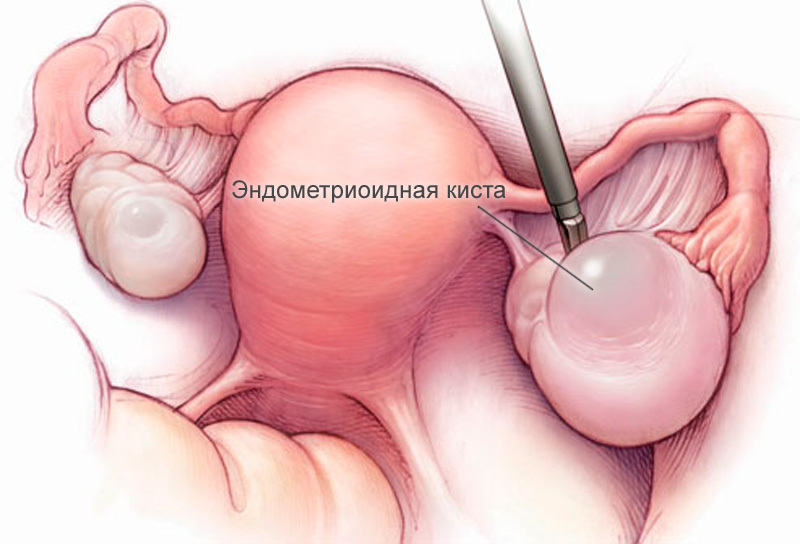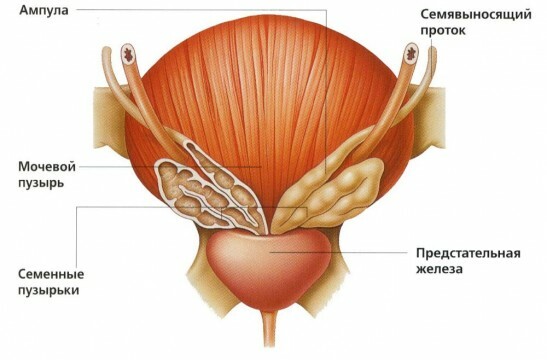Ovarian cyst can appear in women of any age. Atheroma is a small formation, filled with fluid and attached to the wall of the ovary. In a certain period of the monthly cycle, the follicle bursts and an egg appears from it, ready for fertilization. This is how ovulation occurs.
If the body fails, and ovulation does not work, pregnancy does not occur. At the site of the ruptured follicle, a yellow body appears that secretes progesterone. After a certain period of time, the formation resolves, and the body continues to function normally.
Causes of the onset of
Throughout life, a woman on the inner genital can form many different cysts. In ovaries, education appears mainly due to hormonal failure. It is hormones that can knock down the course of natural processes and make serious adjustments. Doctors say that the occurrence of cysts are most affected by women who are in menopause, or young girls whose menstrual cycle is just beginning to be established. Women who gave birth two or more times are more protected in this regard.

Causes of the appearance of cystic vesicles can be:
- Thyroid gland failures;
- Necrosis of tissues;
- Breaking the hormonal background;
- Obesity;
- Various injuries of the internal genitalia;
- The appearance of benign or oncological tumors;
- All kinds of infections;
- Passing inflammatory process of the genitourinary system;
- A sharp drop in immunity;
- Diabetes mellitus;
- Frequent nerve stress, stress;
- Long reception of hormonal preparations;
- Change of climatic conditions;
- Low-quality food.
Signs of the appearance of a cyst
In order to recognize the occurrence of any gynecological disease in time, a woman should carefully monitor her health. Any deviation from the norm in the first place affects the menstrual cycle, so doctors recommend to keep a special calendar, with marked dates of arrival monthly.
The appearance of the following symptoms should alert the woman:
- Menstrual cycle failure;
- Periodic or persistent abdominal pain;
- Abundant bleeding during menstruation, accompanied by severe pain;
- Duration of the monthly for more than seven days;
- Allocations with blood streaks after the end of the cycle.
Typically, cysts appear with periodic inflammatory processes of the ovaries and appendages. After complete treatment of the process, the tissues on the ovaries become less elastic and they quickly generate education data.
Species of
cysts Depending on the cause of the onset and the manifesting symptoms, the doctors distinguish the following atheros:
- endometrial,
- paraovarian,
- follicular,
- dermoid,
- serous.
Endometric
In the medical literature, there is such a thing as endometriosis. It arises in this way: everything that is inside the uterus is called the endometrium. During the menstrual cycle, it thickens and prepares for fertilization. If for some reason, the egg was not fertilized, and conception did not occur, the endometrium begins to be rejected by the uterus. So the monthly starts. In certain cases, the endometrium may be outside the uterus, and then there is endometriosis.
These neoplasms provoke an inflammatory process that can lead to infertility. Atheroma begins to form on the surface of the ovary and after each menstrual cycle becomes larger. Outwardly it resembles a vial with a dark brown liquid, which, reaching a certain size, can burst. With this development of events, the entire liquid splashes into the abdominal cavity.
An endometric cyst is seen using an ultrasound machine, and looks like a bright spot on a dark background. This kind of atheroma can be confused with the yellow body, outwardly they are slightly similar. Therefore, if a bright spot is found on the pictures, the doctor decides to wait a couple of months, and then proceed to treatment. The formation of the yellow body basically passes by itself, and after making repeated pictures in two months, the gynecologist will see a decrease or complete disappearance of the education. If the atheroma has not disappeared, but on the contrary increased in size, a decision is made on surgical intervention.
On a question whether the ovarian cyst of an endometric character can resolve, the gynecologist will answer unequivocally - no. Moreover, delaying the operation can significantly complicate the situation. After the surgical intervention, the patient is prescribed a course of treatment with hormonal drugs.
The causes of endometrial formation can be:
- abortions;
- obesity;
- bad habits, in particular smoking;
- long use of a spiral as a means of contraception;
- failure in the work of immunity;
- is a bad ecology.
Most often, endometrial atheromas occur in nulliparous women.
Paraovarial
A paraovarian cyst grows near the fallopian tube or near the ovary. This type of education does not reach a large size, and is found on a routine examination of a woman. Such an atheroma can form from particles of embryological tissues or from the remains of an oocyte. Paraovarial cyst is not a big threat to the life of a woman.

Symptoms of this type of education may be uncomfortable sensations during intercourse, periodic minor pain at any time of the menstrual cycle.
This kind of cyst does not resolve itself, usually hormonal therapy is prescribed for its treatment. Surgical intervention is performed in rare cases, when the formation becomes very large.
Follicular
The follicular cyst belongs to the category of benign tumors. It is formed from the follicle and is filled inside with a liquid of estrogens. Basically, it arises from the lack of ovulation. In size, the formation can reach about 10 centimeters.
The main symptoms of the onset of follicular atheroma can be:
- Monthlys last more than a week and are characterized by abundant secretions;
- After sexual intercourse, there are discharges with blood streaks;
- The menstrual cycle is accompanied by severe pain;
- Body temperature rises.
Follicular cysts appear on both ovaries. If the size does not exceed 4 centimeters, the atheroma can resolve itself through several menstrual cycles.
With large physical loads, large-sized follicular cysts can burst. It can also occur during pregnancy, active sex life.
Dermoid
The cause of the dermoid cyst is the embryonic rudiment. Scientists have not yet determined the cause of the disease. This cyst develops very slowly, and at the beginning of its formation does not cause the woman any trouble.
The dermoid cyst looks like a pouch in which nails, hair, bones are collected. The pouch has a round shape, and does not exceed 7 centimeters in size. If the cyst has reached a large size, she begins to harass a woman. This manifests itself in general malaise, lower abdominal pain.
You can see the cause of poor health at the examination of the patient on the ultrasound machine. Over time, the tumor displaces healthy tissues from the ovary, and eventually completely captures the entire ovary. Due to the appearance of a dermoid cyst, ovary torsion may occur.
In modern medicine there is no medical treatment for this type of cyst. It can not dissolve by itself, and therefore the gynecologist always directs the patient to the operation. Women of any age can be at risk. The faster the operation is performed, the less complications there will be.
Serous
A benign tumor contains serous fluid. The cyst can develop to any size. When a serous cyst occurs, a woman experiences severe pain during menstruation, pressure on the bladder, pulls in the waist. With large serous cysts, the abdomen may be slightly inflated from the side where the disease occurred.
Very rarely education grows into a malignant one. This can contribute to the following factors:
- promiscuity;
- appearance of inflammation after abortion;
- advanced sexually transmitted diseases;
- disruptions in the endocrine system.
Self-serous atheroma does not resolve. If the diagnosis reveals the initial stage of the disease, the gynecologist prescribes medication, if the education has reached a large size and worries the woman - the doctor sends the patient to the operation.
If any type of cyst is found, the patient first of all is interested in the gynecologist - how the ovarian cyst resolves and whether it is possible in her specific case. The doctor objectively assesses the situation and prescribes medication or surgical intervention. To successfully get rid of the disease is important timely diagnosis and properly selected treatment.



